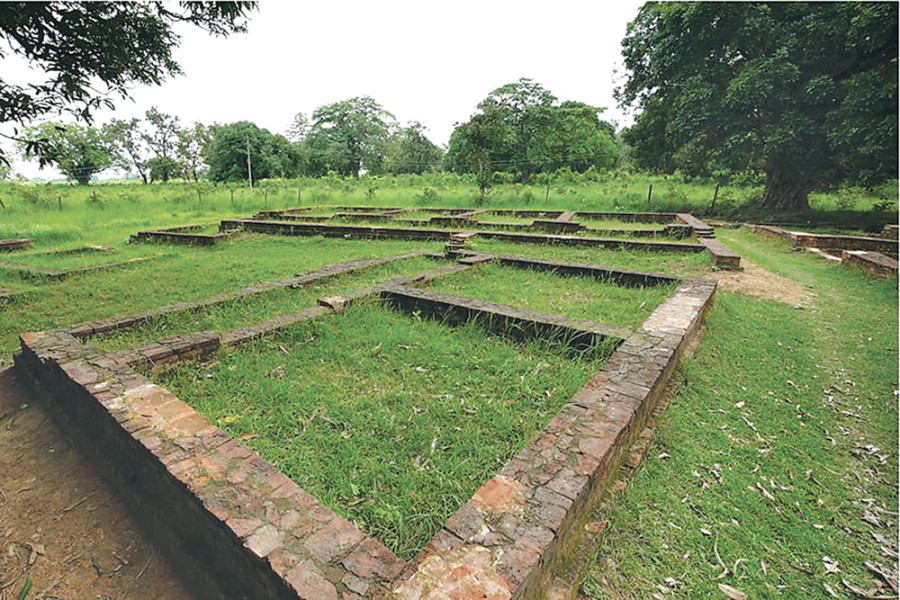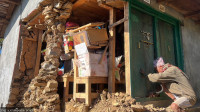Opinion
Matters of antiquity
Proper excavations have to be conducted at Tilaurakot and its vicinity to find out its real status
Gitu Giri
The identification of Kapilavastu has been a challenging job for archaeologists. For that, one will have to critically examine Buddhist literature, Chinese pilgrims’ accounts, archaeological findings and scholarly writings. Facts should be established for identification of ancient Kapilavastu and its capital town. The antiquity of the site needs to be justified by cultural activities relevant to the time before 8 BCE, including the dense forests and the birthplace of Krakuchchhanda and Kanakamuni Buddha adjacent to each other. According to Lalitavistar, Kapilavastu was situated near the slopes of the Himalayas. Lord Buddha had also mentioned to Bimbasar of Maghada that he was the dweller of a place near the Himalayas, which are no more than 16 kilometers north of the ruins of Tilaurakot.
Capital in ruins
To the north of the ruined complex of Tilaurakot is the char kose jhadi (a 13 km stretch of forest). Visitors can still see the dense forests in its vicinity. However, Piprahawa has no claims to be the ancient Kapilavastu as there are no natural forests of sal trees. According to Dighanikaya, Kapilavastu is situated on the banks of a lake. The site of Tilaurakot is located on the western banks of Banaganga River. Named after the sage Bhagiratha, it has been flowing for the past 2,500 years. No river is seen flowing anywhere near Piprahawa. The Stupa and Ashoka pillar found at Gotihawa village may be identified with the Nirvana Stupa of Krakuchchhanda Buddha as mentioned by some Chinese pilgrims. Pipri, about one km north-west of Gotihawa, may be identified as the native town of Krakuchchhanda. The inscribed-pillar of Kanakamuni Buddha on the banks of Niglisagar, about five km east of Tilaurakot, indicates the existence of the town of Kanakamuni in its vicinity.
Ancient techniques and tradition dictate that the town should be encircled by walls. Hiuen-Tsiang had seen the capital in ruins. The royal precincts of bricks within the city measured about four kilometres; the foundation walls were still strong and high. Mahavastu, a Buddhist text, too mentioned the same details. In the course of excavation of the Tilaurakot complex, the brick walls have been exposed. Tilaurakot is encircled by a thick burnt brick wall covering a length of 518.143m north-south and 396.227m east-west, with a
moat roughly six metres wide. However, such was not seen at Ganawaria and Piprahawa. This displays antiquity that goes beyond 1300BCE. On the
other hand, the first period of Ganwaria is datable only between 800 and 600BCE on the basis of fine greyware, black polished-ware and other artifacts found from all layers of these sites. A geophysical survey conducted by the Unesco has also shown its antiquity.
Ancient city of Kapilavastu
In ancient period, the palace complex was surrounded by an outer wall having four gates, with one on each side. It had many rooms and chambers such as bedrooms, drawing rooms, toilets, mirror halls, annexe and others. Tilaurakot mound has produced ruins of a roughly pentagonal shape with four gates including a wide moat roughly six metres wide. Hiuen-Tsiang has described the existence of such a wall in the seventh century. Many scholars do not agree with BK Rijal’s intepretation of this complex as Suddhodhana’s palace complex. Being a huge fortified complex, the ancient palace of Suddhodhana may be buried under the mounds in the north-east portion of the citadel. Lumbini lies to the east of Tilaurakot, as mentioned in Chinese travellers’ accounts. The River of Oil, described by Hiuen-Tsiang, is still flowing in Lumbini today and is known as Telarnadi in local dialect.
It is clear from available evidence that Tilaurakot complex, its vicinities, Piprahawa and Ganwaria were part of the republic of ancient Kapilavastu of the Shakyas. This explains the existence of various mounds of ancient structures along the Nepal-India border. The inscriptions of “Devaputra Vihare…”, “Negama” and “Negameya” on the seals from Piprahawa and Tilaurakot prove Buddhist monastic characters and their use for trade. These two sites may have been on the north-south route. Evidence available so far is more in favour of Tilaurakot than Piprahawa-Ganwaria to be the ancient city of Kapilavastu. Proper excavations should be conducted at Tilaurakot and its vicinity to find out its real status as noted in the Buddhist texts and Chinese accounts.
Giri is a professor at Bhairahawa Campus, Lumbini




 9.12°C Kathmandu
9.12°C Kathmandu










